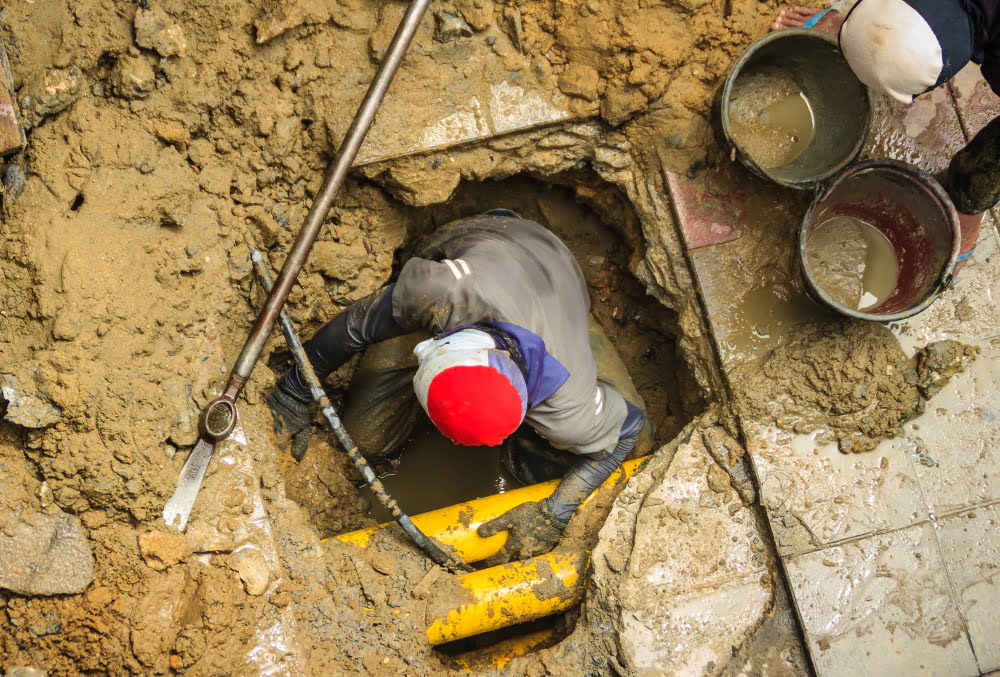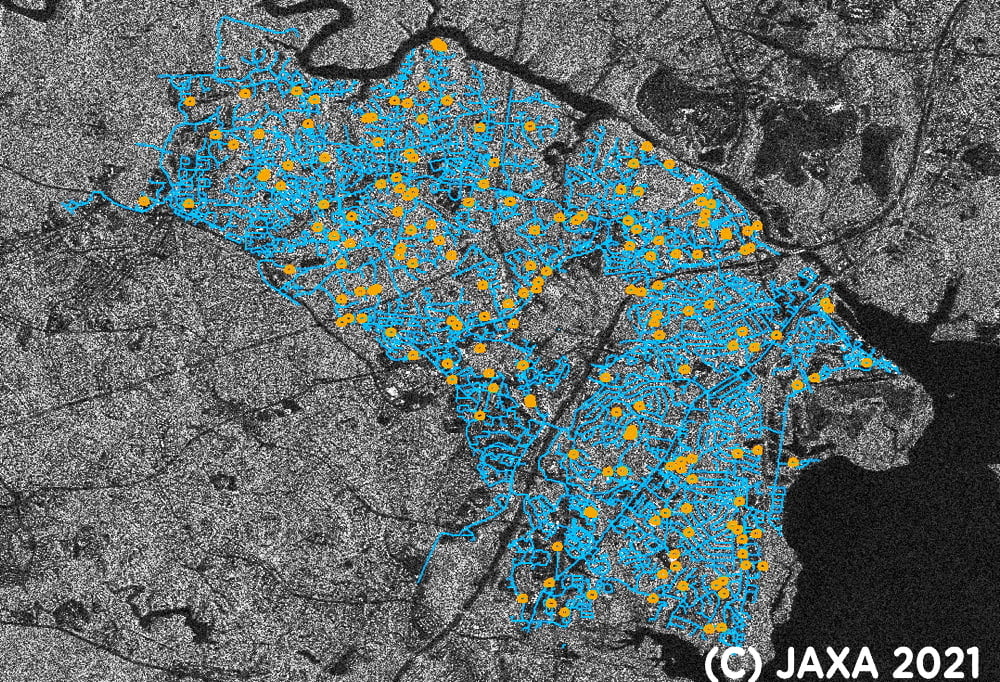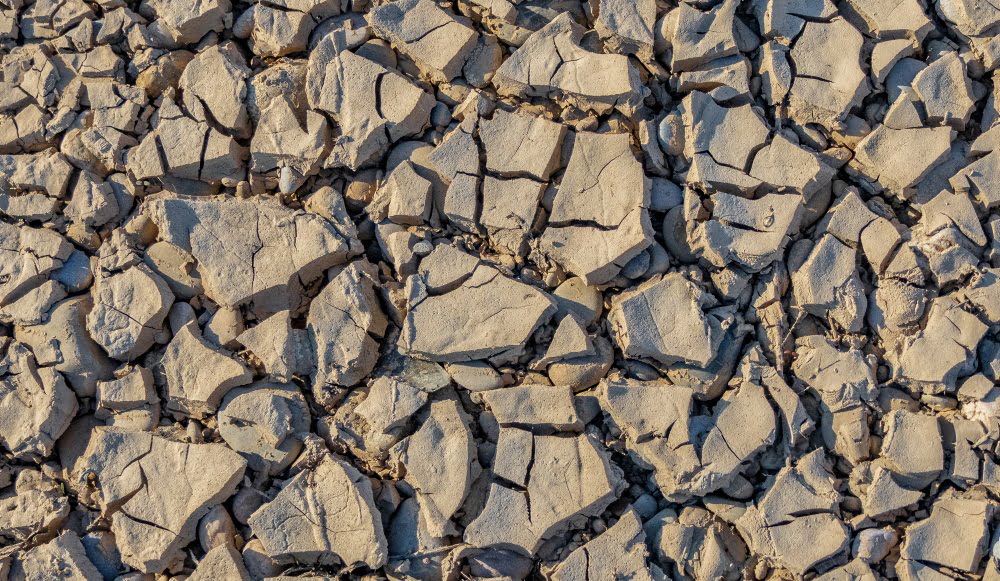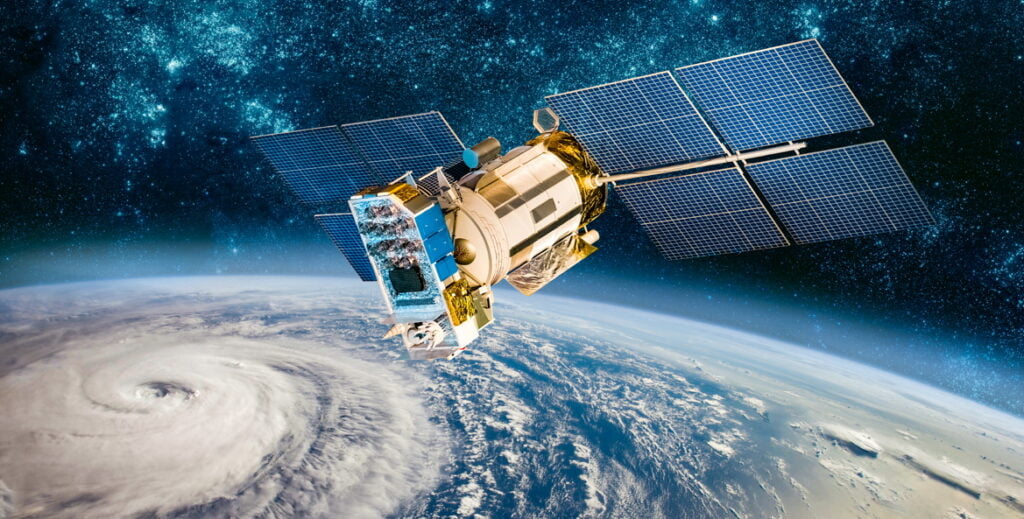Technology developed to detect moisture on Mars is saving millions of liters
Europe has suffered some its worst droughts for 500 years. Soaring temperatures this summer saw a surge in demand for water, and huge extra pressure on ageing networks of supply pipes.
The result has been a huge increase in leaks. While a burst main water pipe on a major road will get repaired very quickly, millions of liters of water are lost to “invisible” leaks underground.
Asterra, a startup in Israel, has developed cutting edge technology that identifies such leaks from radar images taken by satellites 600km (372 miles) above the Earth.

Using artificial intelligence and machine learning, it’s able not only to “see” water from space, but also to distinguish between drinking water, sewerage, and groundwater. It then alerts the water company, so it can find and fix the leak.
Asterra developed the technology in the search for underground water on Mars and other planets. Lauren Guy, the geophysicist and entrepreneur who headed the research team, quickly recognized that if it could work so far away, it could be even more effective here on Earth.
The scale of the problem here on Earth is immense. Spain loses 28 per cent of all its piped water to leaks. In Italy it’s 37 per cent. Malta is 42 per cent and Ireland is 47 per cent.
“There’s not a lot of point in taking raw water out of the ground, spending money treating it, and putting it into the system, only for it to leak back into the ground again,” Steve Baker, of Asterra, tells NoCamels.

He is Country Manager for the UK, where England has just had its hottest summer since records began in 1884. It also recorded its highest ever temperature – 40C/104F – and, in some parts of the country, the lowest ever summer rainfall.
“The more leakage we can avoid, the better for the environment, for the water companies, and for the customers. That’s what we’re trying to help them do,” he says.
Asterra is currently finding leaks day in, day out in the 65 countries where it operates. It says no other company has been able to overcome practical challenges of spotting water leaks from space.
“We use radar technology mounted on a satellite with which enables us to penetrate the Earth’s surface,” says Baker, a chartered civil engineer with over 25 years of experience working for water companies, consultants and contractors.
“And we’ve developed algorithms that then look for the signature of potable water (safe to drink) mixed with soil. We’re basically looking for potable water where it shouldn’t be – outside the pipe rather than inside the pipe.”

There were two major obstacles to overcome in developing the technology. The first was filtering out all the noise from other telecommunications satellites on similar wavelengths that interfere with the signal. The second was matching up the images from space with the reality below.
“It’s hugely complicated because we’ve got a round Earth, and we map it on a on a flat piece of paper or on a flat screen. Trying to translate one to the other is a challenge,” says Baker.
Sign up for our free weekly newsletter
SubscribeAsterra, formerly known as Utilis, was founded in 2013, in Kfar Saba, central Israel, and its leak detection program was launched commercially in 2016 as a SaaS – software as a service – which means users pay a subscription.
The patented radar technology sees through tarmac, concrete and soil to a depth of around three meters. The satellite data narrows down the search area, so that technicians on the ground are able to find and repair three times as many leaks as they would without it.
“They will go out and use techniques such as X-ray to identify exactly where the leak is, and then get it fixed,” he says.
Asterra’s technology, which is used across most of the UK, has been saving 83 million liters of water every day, helping it towards a target of just 15 per cent water loss. Some leaks have gone unnoticed for years.

“Without our technology you may know you have a leak somewhere in there, but you don’t know where to turn on the X-ray machine that will tell you exactly where it is,” says Baker.
It’s a never-ending cycle. Applying a ‘band-aid’ resolves one problem, but increases the pressure elsewhere, resulting in further leaks.
One alternative would be to replace the entire pipe network, which would be impractical and impossibly expensive, especially in crowded cities like London. It has thousands of miles of pipes, many over 100 years old, but wholesale replacement would bring it to a grinding halt. Another would be to do nothing and watch the problem spiral out of control.
Asterra’s solution is to provide water companies with the data they need to locate hidden leaks.
Drought conditions, such as those experienced across Europe this summer, make matters worse, and not just because people shower more, water their gardens more and generally consume more.
The lack of water actually causes more leaks. The soil moves when it dries out, and moves again when it becomes moist again, pushing and pulling the pipes to breaking point. It’s like the freeze-thaw cycle in winter that also causes leaks.
The technology that Asterra has developed for leaks can be used to prevent disasters such as landslides and dam bursts.
Cuttings and embankments typically used to provide a flat route for railroads can become too wet if they’re not properly drained, leading to landslides that could derail a train or block the track with catastrophic consequences.
Asterra has adapted its technology to measure the moisture content from space, and to warn of possible danger.
Likewise, mining corporations build huge dams to hold the “tailings” – or waste – from their excavations, but there’s always a danger they will burst. Asterra is currently working on a solution for that as well.
Related posts

Editors’ & Readers’ Choice: 10 Favorite NoCamels Articles

Forward Facing: What Does The Future Hold For Israeli High-Tech?

Impact Innovation: Israeli Startups That Could Shape Our Future




Facebook comments